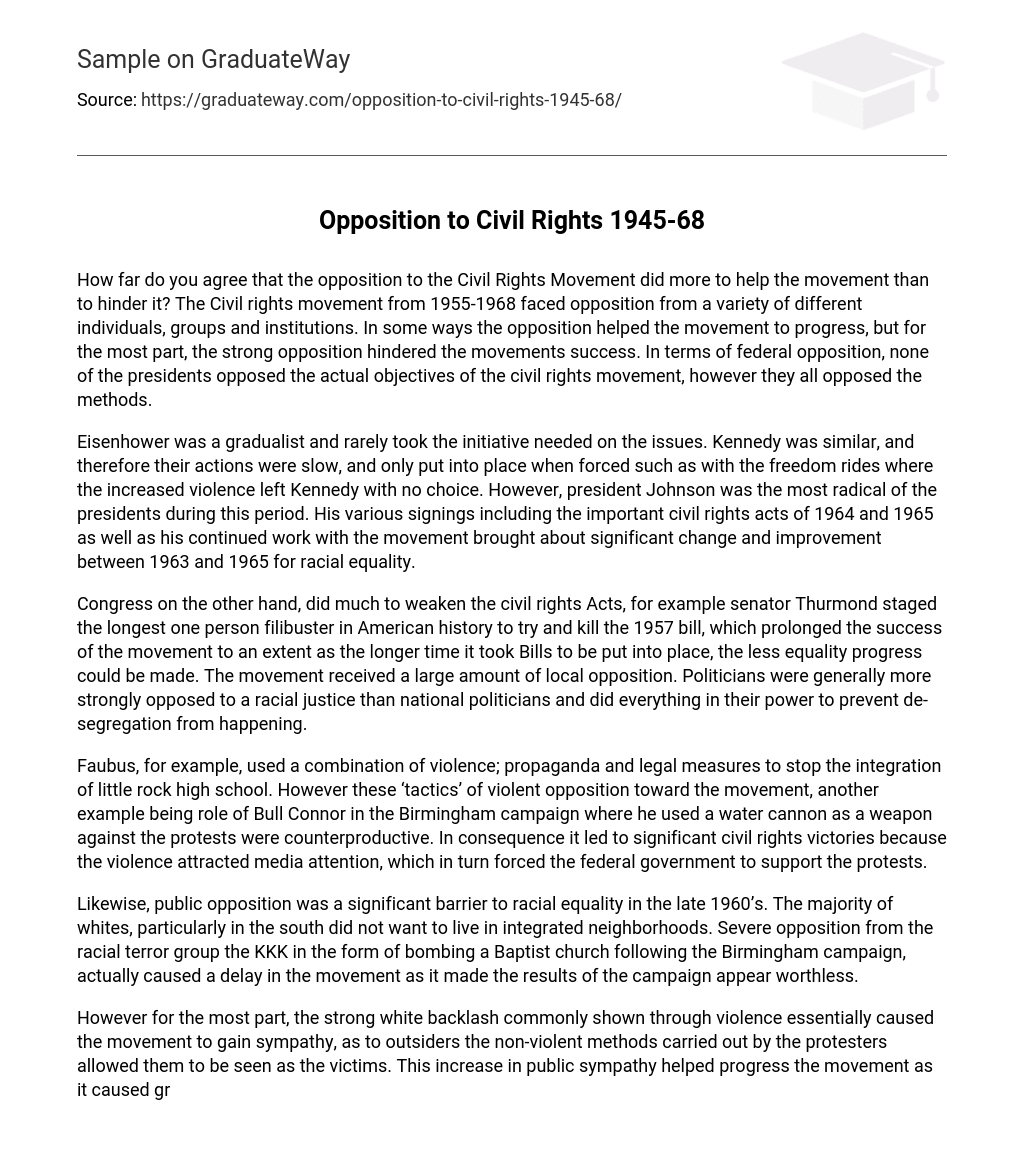How far do you agree that the opposition to the Civil Rights Movement did more to help the movement than to hinder it? The Civil rights movement from 1955-1968 faced opposition from a variety of different individuals, groups and institutions. In some ways the opposition helped the movement to progress, but for the most part, the strong opposition hindered the movements success. In terms of federal opposition, none of the presidents opposed the actual objectives of the civil rights movement, however they all opposed the methods.
Eisenhower was a gradualist and rarely took the initiative needed on the issues. Kennedy was similar, and therefore their actions were slow, and only put into place when forced such as with the freedom rides where the increased violence left Kennedy with no choice. However, president Johnson was the most radical of the presidents during this period. His various signings including the important civil rights acts of 1964 and 1965 as well as his continued work with the movement brought about significant change and improvement between 1963 and 1965 for racial equality.
Congress on the other hand, did much to weaken the civil rights Acts, for example senator Thurmond staged the longest one person filibuster in American history to try and kill the 1957 bill, which prolonged the success of the movement to an extent as the longer time it took Bills to be put into place, the less equality progress could be made. The movement received a large amount of local opposition. Politicians were generally more strongly opposed to a racial justice than national politicians and did everything in their power to prevent de-segregation from happening.
Faubus, for example, used a combination of violence; propaganda and legal measures to stop the integration of little rock high school. However these ‘tactics’ of violent opposition toward the movement, another example being role of Bull Connor in the Birmingham campaign where he used a water cannon as a weapon against the protests were counterproductive. In consequence it led to significant civil rights victories because the violence attracted media attention, which in turn forced the federal government to support the protests.
Likewise, public opposition was a significant barrier to racial equality in the late 1960’s. The majority of whites, particularly in the south did not want to live in integrated neighborhoods. Severe opposition from the racial terror group the KKK in the form of bombing a Baptist church following the Birmingham campaign, actually caused a delay in the movement as it made the results of the campaign appear worthless.
However for the most part, the strong white backlash commonly shown through violence essentially caused the movement to gain sympathy, as to outsiders the non-violent methods carried out by the protesters allowed them to be seen as the victims. This increase in public sympathy helped progress the movement as it caused growing support for civil rights. Therefore, whilst opposition to the movement helped the movement progress in areas due to an increased sympathy and the allowing of the blacks to take the moral high ground.
Opposition as a whole served as more of a difficulty for the movement to achieve racial justice faster, as each element of opposition, be it at high federal level or a low local level considerably delayed the movement from achieving its aims as the time it took to attempt to overcome these conflicts could have been used improving equality further and at a faster rate.





